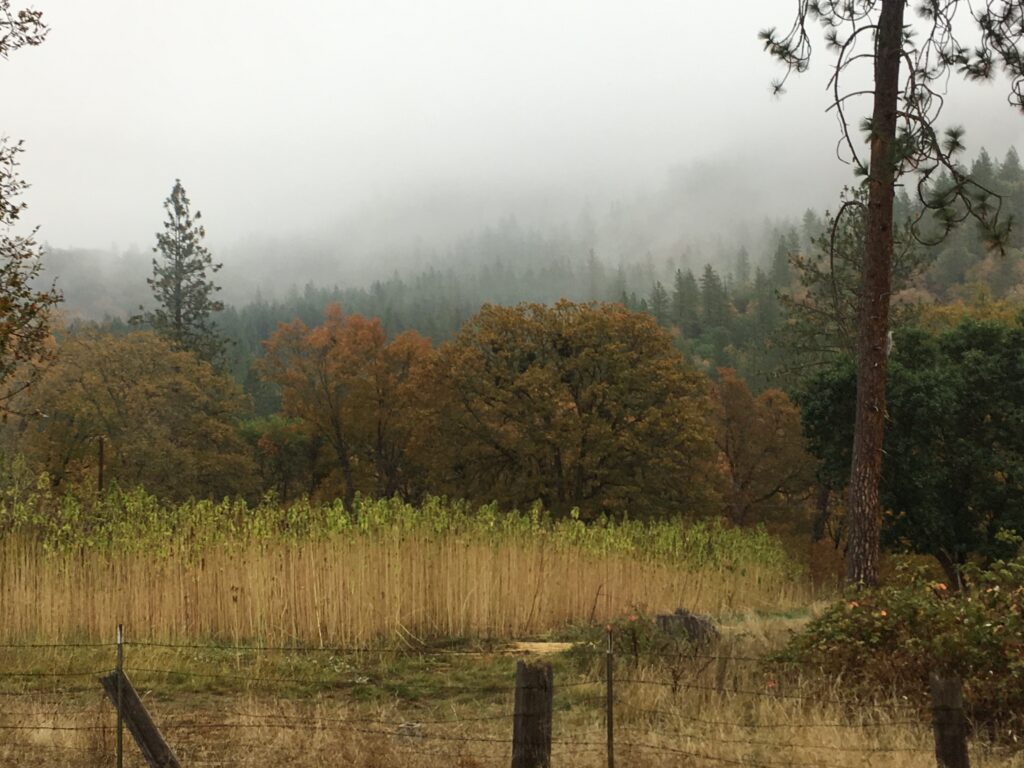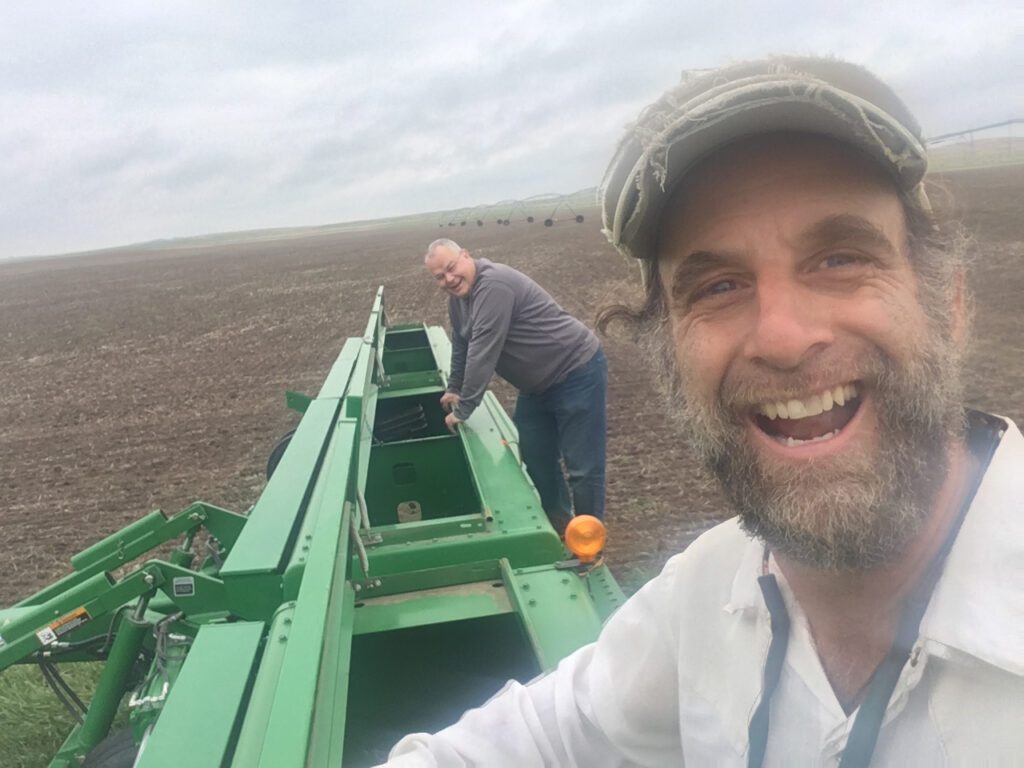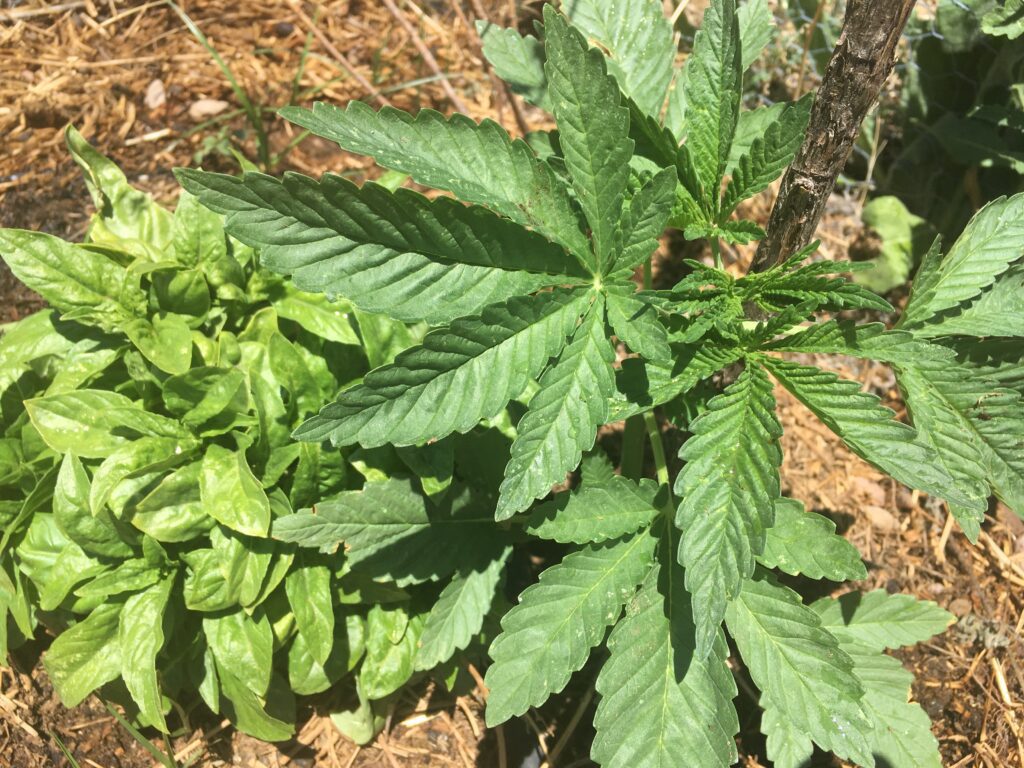What vegetable growers can learn from hemp/cannabis farmers, and vice versa
Hemp has provided my entrée to regenerative farming. Being a water-hardy plant that has shown a remarkable ability to survive progressive feral generations (check any ditch in Nebraska or Wisconsin), hemp reveals everything one doesn’t need to add for it to survive and thrive, especially after germination — particularly when I, as the farmer, have done my job building soil. I realized very quickly upon becoming a hemp farmer that my real job was soil farming, beginning well before planting season.
Now, as we sow our eighth hemp crop here on the Funky Butte Ranch and on clients’ farms worldwide, I’ve come to realize that the truism “we’re all soil farmers now” is accurate for all farmers whatever their ostensible main crop. Whether you’re growing kale, basil, tomatoes, corn or hemp, what you do with your soil months before planting your “main” crop plays a huge role, alongside self-developed genetics and daily attention, in what your harvests look like in the autumn. I pay particular attention to nurturing the underground realm where billions of beneficial microbes in turn feed my family.
How I build soil is very simple. It’s a pro-local-microbe philosophy that helps establish healthy soil, which then requires fewer annual inputs. You wake up and the local ecosystem is working.
When I pulled up a chunk of garden ground to plant a seed the other day (sometimes we even leave the previous season’s mother hemp and tomato plants in the ground), I saw wavy white layers. These are clusters of local mycelium expanding from the batch I collected in the hills and added in a compost tea three straight springs — but not this year.
The nitrogen-fixing white clover I planted a half-decade ago always returns on its own, too. This year I’m basically a hemp/kale midwife. Next year I’ll be more proactive again — it’s fun to collect mycelium in the wetter parts of your watershed. Your garden microbes know and love these fungus neighbors. They build one another, and in turn your veggies and hemp.
Speaking of kale, basil and hemp, companion planting is another component of hemp farming that might prove useful for a vegetable farmer. Prior to the post-World War 1 rise of monoculture, most farmers cultivated what today would be catalogued as some version of “alternative rotational polyculture agriculture.” Our great-grandparents farmed this way because it provided the best yield and the highest bioavailability.

Experimenting each year in my small home polyculture garden, I find that the hemp I grow for genetics loves shading basil and arugula, and being surrounded — sometimes encircled tightly — by tomato vines. Last season one of our best-producing hemp plants, a towering redwood of the cannabis family, played home to a towhee nest. It is my belief as I approach the decade mark as a farmer that the best hemp I’ve grown has resulted in part from finding good plant friends for the ostensible money crop.
Another overlap for hemp and veggie farmers is the wisdom of highlighting the local, righteously valued ownership of the enterprise itself. Key parts of your brand might include carbon sequestration, farmer-ownership and another of your enterprise’s unique qualities (maybe a historic farm, a fifth-generation farming family transitioning back from monoculture, or veteran ownership). I suggest that other farmers brag on labels and market signs (as I do with my product) about planting organically outdoors (or at least in a greenhouse) under the sun, in real, local, living soil. And you can explain to customers in person and on your website and social media that this soil is fed by as many local inputs and seeds as possible.
Regenerative modes have been conventional for most of human history — which is why I think carbon sequestering is a valuable brand. Customers understand it intuitively. As such, “carbon-friendly enterprise” is a wise independent farmer’s leading slogan — as important as “local” and “organic.” Everyone wants a livable planet for their great-grandchildren.
For the farmer-run enterprise, I hope you’ll launch with greater confidence than some researcher claiming to have found a cure for a disease. You are doing something better: preventing disease. Yours is a top-shelf “craft” product, an entrepreneurial advantage that my colleague Roger Gussiaas of North Dakota’s Healthy Oilseeds endorses for farmers with a long-term gameplan. As a wholesale buyer of organic flax and hemp seed, he sees “conventional” commodity crop farmers struggling in the U.S. heartland.
It doesn’t matter what the main crops are. Working as a regenerative farming adviser, I’ve watched farmers regale Roger with tales of getting ripped off by often offshore-owned middlemen.
“When corn prices are up, so are the price of tractors, equipment, fuel, seed and land leases,” rancher and farmer Mike Vavra told Roger and me of traditional agricultural life in South Dakota. Many farmers see a rigged wholesale commodity system where the farmer always pays for the cost increases and where even high yields mean lower prices coupled with inflation on “conventional” inputs.
Roger’s reply is always to suggest that the farmer consider being more entrepreneurial, as he did 20 years ago when he traded flax farming for flax (and now also hemp) processing. This is similar to advice the great American farmer/author Wendell Berry asked me to pass on to hemp farmers as the industry was re-launching in 2016: “Avoid the middleman or you’ll be serfs to the same middleman as soy farmers.”
Gussiaas and Berry are essentially advising an ambitious farming family to go smaller scale and value-added. To that I will add to always grow organic, imperfect as that certification is, and create a product that is different and better than any you’ve seen —then you are not only your best customer, but you provide your most heartfelt and outspoken testimonial.
Of course, Roger also points out that with the potential higher margins of independent entrepreneurialism come responsibilities like liability, quality control and payroll. Embedded in this wisdom is another lesson of independent hemp farming that I think might be well shared with vegetable growers: we’re not just farmers anymore. We’re farmer-entrepreneurs who are the primary marketers of our crop.

Companion planting has also meant learning the value of being hands-off. I like to think this is not a synonym for laziness. The fact is, in my family we don’t even necessarily consider local wild plants to be weeds. We’re fortunate to have our goats providing a nitrogen-rich waste alfalfa bounty that also serves as free weed matting. Where we really want to make sure the hemp gets established, we may clear out a few purple asters or horehound seedlings.
Most of the time, though, I believe the native ecosystem knows what grows well for balanced soil health. So, on smaller-scale projects I arguably favor my “main” crops but whenever possible veer away from the idea that monoculture increases yield. We tried that. It isn’t working out. And dumping toxic herbicides sure doesn’t increase quality. I hardly know a farmer worldwide today who doesn’t acknowledge concern about reduced yield and compromised water tables. I wouldn’t say that was the case a decade ago.

There are several other overlaps that hold true for farmers of other crops. One of them is the importance of preparing for each stage of a season. You can’t just wake up at harvest time and leap in without a large but usually manageable number of preparatory tasks dialed in, beginning mid-season at the latest. Is the grain silo or barn clean and rodent-proof, for instance?
The point is to check off key steps, so as not to get surprised. When it comes to hemp grown for grain, the classic rookie mistake I’ve seen is failure to prepare for drying. Hemp is harvested greener than many seed crops and must get dried to 7 percent moisture immediately — within hours of harvest in many climates. This means dialing in drying equipment or facilities months in advance. Organic hemp grain, by the way, is a terrific market for farmers growing at scale — I love helping folks transition from the corn and soy cycle.
Storage preparation and drying are just two tasks to have dialed in. Because there are dozens of such vital benchmarks, I recommend having a diligently consulted annual farm tasks calendar. It seems obvious, but seeing “organic certification site visit next week” written down has helped me make that kind of deadline more than once.
Soil prep, that vital component of all farming forevermore, also has its distinct times of year. I’m big on fungus — specifically that spring gathering of beneficial mycelium in paper bags, which I brew out in a rice/sugar mixture, before diluting into a compost tea that I put on the field. This is also doable at scale. For overwinter soil building I plant nitrogen fixers like white clover and vetch. Other than that, I like to add kelp for trace minerals and the aforementioned goat poop/alfalfa mixture for nutrients and weed matting. The soil does the rest. For largescale professional projects, I’m a bit more exact, studying pre-season soil test results to see which regenerative amendments might be helpful.
Nothing unites all farmers like the need to build soil. U.S. “conventional” farmers know that much of traditional farmland acreage is stressed or sick — they have to dump more than twice as much nitrogen on each year as they did in 1964. Europe has three million contaminated sites, the United States has 1,300 Superfund sites, and China estimates that 20 percent of its soil is polluted. The good news is that soil building works.

As for lessons I’ve learned from vegetable and grain farmers and cattle ranchers in the course of my hemp work around the world, I can think of three clear ones. The first is, “Let farmers farm.” No wheat farmer or sheep rancher is going to sit idly by while a bureaucrat or pay-to-play “industry organization” comprised of non-farmers attempts to set policy. Humanity’s survival is in farmers’ hands, and we’re going to set our own rules. Farmers don’t tell lawyers how to try cases or dentists how to fill teeth.
A second lesson I’ve learned in particular from heirloom vegetable farmer/entrepreneurs at farmers markets from Maui to Mexico is “Own your seeds.” In hemp, especially coming from an artificially suppressed economy, a farmer’s seeds are his/her IP. When someone tries to tell me that the serfdom of the current certified-seed wholesale system (to which Wendell Berry alluded) is how it works, my reply is, “How’s that working out for the worldwide food system, let alone farming communities’ well-being?”
The third lesson I’ve learned from vegetable and grain farmers worldwide is that a large-scale return to a regenerative mode is not a culture war issue (except maybe for herbicide salespeople). Everyone sees declining yields, lower (or salty) water tables and climate chaos.
Farming/advising is a second, concurrent career for me (alongside writing and performance), which I mention partly by way of saying that if I can implement and benefit from the advice I’m giving, anyone can. And I also mention it because for me, fun is a food group. It’s easy for me to set out to sequester carbon and advocate for regenerative farmers when the harvest is diverse, nutrient-dense abundance. It leaves me confident that my family will eat for another year.
Doug Fine is a bestselling author, hemp farmer and goat herder. His latest book, American Hemp Farmer (now in development as a food security television series), was nominated as the Santa Fe Reporter’s 2021 Book of the Year. He is the instructor of an online regenerative hemp course in partnership with AcresUSA (events.acresusa.com). Learn more at dougfine.com; Twitter and Instagram @organiccowboy.














